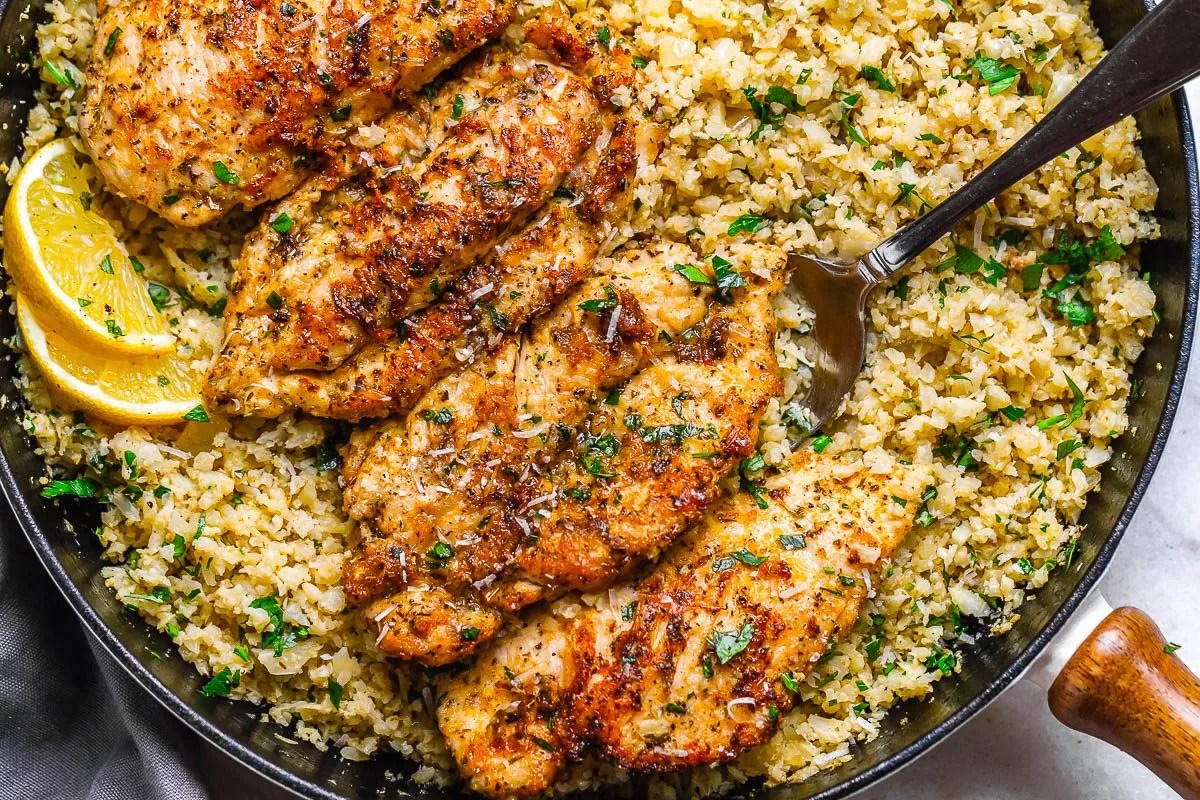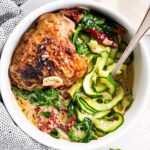Indulge your cravings without the guilt! This guide unveils the secrets to crafting decadent, low-carb dinners that rival your favorite cheat meals. Imagine succulent steaks bursting with flavor, creamy sauces that coat your palate, and perfectly textured sides that complement each bite – all while staying true to your low-carb lifestyle. Prepare to tantalize your taste buds with recipes designed to satisfy your hunger for rich, satisfying meals without derailing your dietary goals. We’ll explore innovative cooking techniques, creative flavor combinations, and visually stunning plating strategies, transforming your low-carb journey into a culinary adventure.
We’ll delve into three mouthwatering main course recipes, each meticulously crafted to deliver the ultimate cheat-meal experience without the carb overload. These aren’t just recipes; they’re blueprints for culinary masterpieces, guiding you through each step with precision and clarity. Accompanying these main courses are three equally satisfying side dishes, designed to balance flavors and textures, elevating your dining experience to new heights. Learn to master various cooking methods, unlocking the potential of your ingredients and enhancing the overall taste and presentation of your low-carb creations. Finally, we’ll explore recipe variations, substitutions, and plating techniques to personalize your meals and ensure every dinner is a visual and gustatory triumph.
Creative Cooking Methods
Unlocking the full flavor potential of low-carb dinners often hinges on employing the right cooking method. Different techniques bring out unique textures and taste profiles, enhancing the overall dining experience. Choosing wisely can significantly impact the final dish, transforming simple ingredients into culinary masterpieces that rival their carb-laden counterparts.
Pan-Searing
Pan-searing, a high-heat cooking method, creates a beautiful crust on meats and vegetables, locking in juices and intensifying flavors. The intense heat caramelizes the sugars naturally present in the ingredients, resulting in a rich, savory depth. This method is particularly effective for lean proteins like chicken breasts or sirloin steak, and firm vegetables such as asparagus or bell peppers. For example, a pan-seared salmon fillet with roasted asparagus becomes a vibrant, flavorful, and visually appealing low-carb dinner.
Advantages of pan-searing include speed, minimal cleanup, and the development of intense flavors and a satisfyingly crisp exterior. Disadvantages are that it can be challenging to achieve even cooking, particularly with thicker cuts of meat, and it requires careful attention to prevent burning.
Slow Cooking
Slow cooking, the gentle art of low-and-slow cooking, is ideal for tougher cuts of meat and vegetables that benefit from extended cooking times. The prolonged exposure to low heat breaks down connective tissues, rendering the meat incredibly tender and succulent. This method is perfect for creating hearty stews, braises, and pulled meats. A slow-cooked beef brisket, shredded and served in a rich, low-carb sauce, offers a decadent dining experience without the carb overload.
The advantages of slow cooking are its ease of preparation and the remarkable tenderness it imparts to the food. Disadvantages include the extended cooking time, requiring advance planning, and the need for a slow cooker or Dutch oven.
Roasting
Roasting, a dry-heat cooking method, involves cooking food uncovered in an oven, typically at high temperatures. This method is excellent for vegetables and larger cuts of meat, creating a beautifully browned exterior and a tender interior. Roasting vegetables like broccoli, cauliflower, and Brussels sprouts brings out their natural sweetness and creates a satisfyingly crispy texture. A whole roasted chicken, seasoned simply with herbs and spices, becomes a stunning centerpiece for a low-carb feast.
Advantages of roasting include ease of preparation, the ability to cook multiple items simultaneously, and the development of rich flavors and textures. Disadvantages are the longer cooking time compared to pan-searing and the need for an oven.
Cooking Method Comparison
| Cooking Method | Time | Equipment | Texture | Flavor |
|---|---|---|---|---|
| Pan-Searing | 15-25 minutes | Skillet, tongs | Crisp exterior, tender interior | Intense, savory |
| Slow Cooking | 4-8 hours | Slow cooker or Dutch oven | Tender, succulent | Deep, rich |
| Roasting | 30-60 minutes | Oven, roasting pan | Crisp exterior, tender interior | Roasted, savory |
Pan-Seared Salmon with Roasted Asparagus
This recipe demonstrates the pan-searing method, showcasing its ability to create a flavorful and visually appealing low-carb dinner.
The vibrant green asparagus spears, glistening with olive oil and kissed by the oven’s heat, offer a delightful textural contrast to the perfectly seared salmon fillet. The salmon’s skin, crisply browned and glistening, promises a satisfying crunch, while the flesh remains moist and flaky. A delicate lemon-herb butter sauce adds a bright, refreshing touch that complements the richness of the salmon and the subtle earthiness of the asparagus.
Ingredients:
* 2 salmon fillets (6-8 oz each)
* 1 bunch asparagus, trimmed
* 2 tbsp olive oil
* 1 tbsp lemon juice
* 2 tbsp butter
* 1 clove garlic, minced
* Fresh herbs (dill, parsley, thyme), chopped
* Salt and pepper to taste
Instructions:
1. Preheat oven to 400°F (200°C). Toss asparagus with 1 tbsp olive oil, salt, and pepper. Spread on a baking sheet and roast for 12-15 minutes, until tender-crisp.
2. Pat salmon fillets dry with paper towels. Season with salt and pepper.
3. Heat remaining olive oil in a large skillet over medium-high heat. Once hot, carefully place salmon fillets skin-side down in the skillet.
4. Sear for 4-5 minutes, undisturbed, until skin is crispy and golden brown. Flip and sear for another 3-4 minutes, or until cooked through.
5. While salmon cooks, melt butter in a small saucepan. Add minced garlic and fresh herbs. Cook for 1 minute, until fragrant. Stir in lemon juice.
6. Serve seared salmon over roasted asparagus, drizzled with lemon-herb butter sauce.
Recipe Variations and Substitutions

Adapting low-carb recipes is a delicious adventure! By swapping ingredients, you can create exciting new flavor profiles without sacrificing the low-carb lifestyle. This section explores variations on a single recipe, showcasing the versatility of low-carb cooking and offering guidance on accommodating dietary needs. We’ll focus on making adjustments to ensure each variation remains both delicious and adheres to low-carb principles.
Spicy Shrimp Scampi Variations
This classic dish offers a fantastic base for experimentation. The following variations demonstrate how simple ingredient substitutions can dramatically alter the flavor profile, maintaining the low-carb integrity.
Variation 1: Mediterranean Scampi: Replace the traditional garlic butter sauce with a vibrant lemon-herb dressing. Sauté finely chopped sun-dried tomatoes, Kalamata olives, and fresh oregano with the shrimp. A squeeze of fresh lemon juice and a drizzle of high-quality olive oil finish this bright and flavorful dish. Consider adding crumbled feta cheese for a salty tang. Substitute zucchini noodles for spaghetti for a complete low-carb experience.
Variation 2: Creamy Coconut Scampi: Infuse the dish with a tropical twist using full-fat coconut milk instead of cream. Add a splash of lime juice for acidity and a pinch of red pepper flakes for a subtle kick. Toasted coconut flakes provide a delightful textural contrast. This variation is incredibly rich and satisfying, a perfect low-carb indulgence. Cauliflower rice can replace the zucchini noodles for a different texture.
Variation 3: Spicy Cajun Scampi: For those who enjoy a fiery flavor, this variation is a must. Use Cajun seasoning generously while sautéing the shrimp. A touch of Worcestershire sauce adds depth and umami. Serve over a bed of chopped broccoli florets for a visually appealing and nutritious meal. This version delivers a bold, satisfying experience that’s surprisingly low-carb. Instead of pasta alternatives, the broccoli acts as a flavorful base, showcasing the shrimp and the Cajun spice blend.
Adapting Recipes for Dietary Restrictions
Many dietary restrictions can be easily accommodated in low-carb cooking. For example, shellfish allergies can be addressed by substituting the shrimp with chicken, firm tofu, or even firm white fish. Nut allergies can be managed by omitting any nut-based ingredients or substituting them with sunflower seeds or pumpkin seeds. Dairy sensitivities can be addressed by using dairy-free alternatives like coconut cream or cashew cream in place of heavy cream or butter. Always carefully read ingredient labels to ensure the products used are free from allergens and adhere to specific dietary requirements. Careful substitution and ingredient awareness are key to ensuring everyone can enjoy these delicious, low-carb meals.
Embarking on a low-carb journey doesn’t mean sacrificing flavor or satisfaction. This guide has equipped you with the knowledge and recipes to create low-carb dinners that are not only healthy but also incredibly delicious. By mastering the techniques and embracing the creative freedom offered within these recipes, you can transform your relationship with food, enjoying rich, flavorful meals while staying committed to your dietary goals. Remember, culinary creativity knows no bounds, especially when it comes to crafting satisfying and healthy meals. So, gather your ingredients, unleash your inner chef, and prepare to experience the joy of guilt-free indulgence!
FAQ Summary
Can I use alternative sweeteners in these recipes?
Yes, many low-carb sweeteners like erythritol, stevia, or monk fruit can be substituted, but adjust to your taste preference and consider their impact on the overall recipe.
How long can I store leftovers?
Leftovers can generally be stored in airtight containers in the refrigerator for 3-4 days. Always ensure food is properly cooled before refrigeration.
Are these recipes suitable for beginners?
Yes, the recipes are designed with clear, step-by-step instructions making them accessible to cooks of all skill levels. However, some techniques might require practice.
What if I have a specific dietary allergy?
Always check ingredient lists carefully and substitute ingredients accordingly based on your dietary restrictions. Consult a healthcare professional if you have severe allergies.


